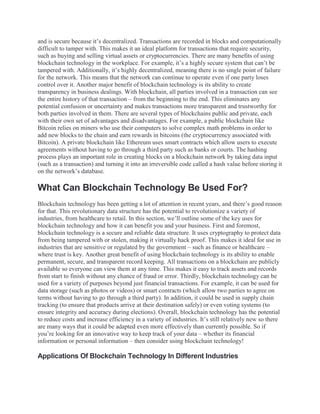The Possibility of an ARM-Based Cryptocurrency: Technical Analysis
As the popularity of cryptocurrencies continues to grow, many are exploring alternative platforms and architectures for their mining operations. One interesting question that has been on the minds of enthusiasts is whether it is possible to build a cryptocurrency based solely on an ARM (Advanced RISC Machines) processor.
For those unfamiliar with the ARM architecture, it is a powerful and efficient CPU design widely used in mobile devices, set-top boxes, and other embedded systems. However, when it comes to cryptocurrency mining, traditional processor-based solutions are often limited by performance, power consumption, and heat generation. In contrast, ARM-based designs are gaining popularity in a variety of areas due to their energy efficiency, low latency, and high throughput.
Challenges of building a cryptocurrency on ARM
Before we delve into the possibilities, it’s important to consider some of the challenges associated with building a cryptocurrency on an ARM processor:
- Performance: While ARM processors are generally faster than traditional CPUs for certain tasks, such as media encoding and compression, they still lag behind in terms of the processing power required for cryptocurrency mining.
- Memory bandwidth: Cryptocurrencies require high-bandwidth memory to store block headers, transaction lists, and other data. Traditional processors with large L1 caches cannot keep up with the demands of cryptocurrency mining, resulting in slower performance.
- Power consumption: Cryptocurrency mining requires significant amounts of power, which can be a problem for smaller devices, such as smartphones or embedded systems.
Potential solutions
Despite these challenges, there are some potential solutions that could enable cryptocurrency mining on an ARM processor:
- ARM-based ASICs (application-specific integrated circuits): Companies such as Imagination Technologies and Samsung have already developed ARM-based ASICs for a variety of applications, including cryptocurrency mining. These chips can be specifically designed for cryptocurrency mining, providing optimized performance and energy efficiency.
- ARM-based GPU miners
: Some companies are exploring the use of ARM-based graphical processing units (GPUs) for cryptocurrency mining. Although this approach is more complex than traditional CPU-based solutions, it could potentially offer improved performance with lower levels of power consumption.
- Hybrid approaches: A hybrid approach that combines an ARM processor with a dedicated ASIC or GPU miner could provide a balance between performance and energy efficiency.
Existing Examples
There are already a few examples of ARM-based cryptocurrencies on the market:
- Litecoin (LTC)

: Litecoin was one of the first cryptocurrencies designed specifically for mining on ARM processors, using an ARM-based ASIC.
- ArmChain: ArmChain is a cryptocurrency that uses a custom ARM-based architecture for its mining operations.
Conclusion
While developing a cryptocurrency based solely on an ARM processor may seem challenging at first glance, there are potential solutions and existing examples to consider. With the development of ARM-based ASICs, GPU miners, and hybrid approaches, it is possible to create a cryptocurrency that can be effectively mined on ARM devices.
However, it is important to note that creating a successful cryptocurrency requires significant expertise in areas such as cryptography, software development, and mining operations. Furthermore, there are still many technical challenges to overcome before ARM-based cryptocurrency can achieve widespread adoption.
Future Outlook
As the cryptocurrency market continues to grow, it will be interesting to see if we see the emergence of more ARM-based cryptocurrencies.